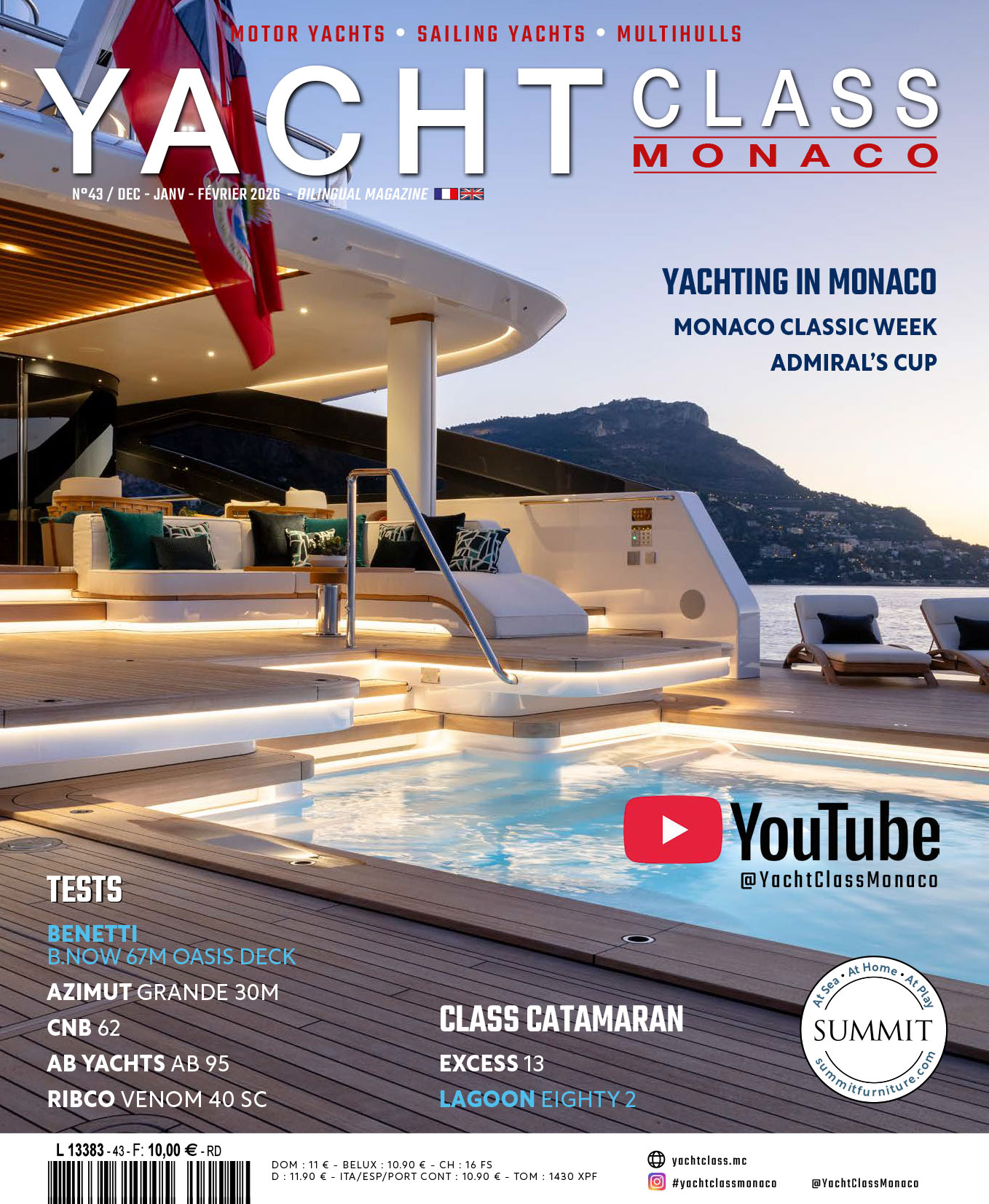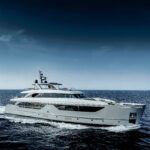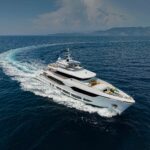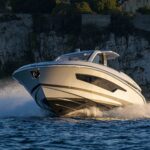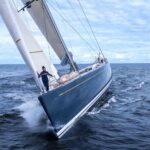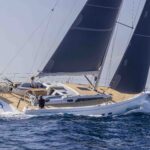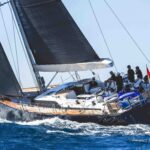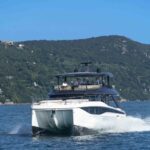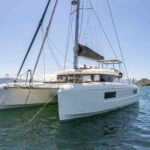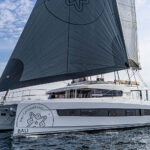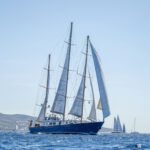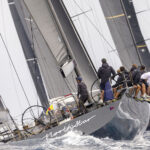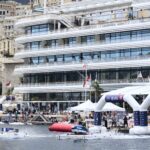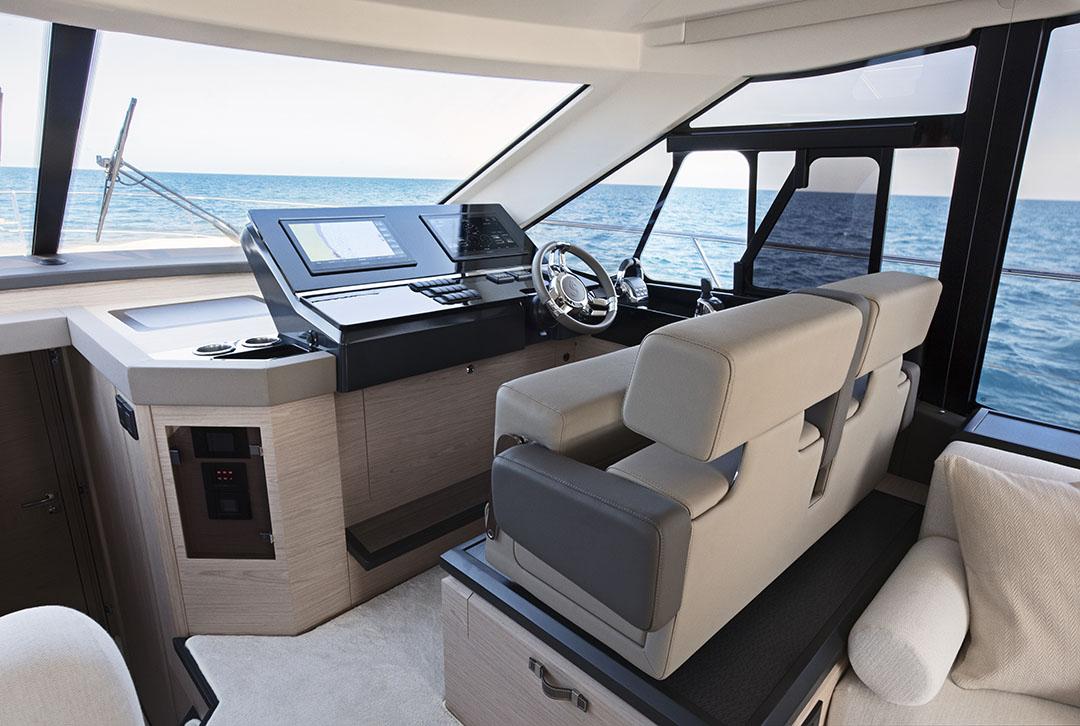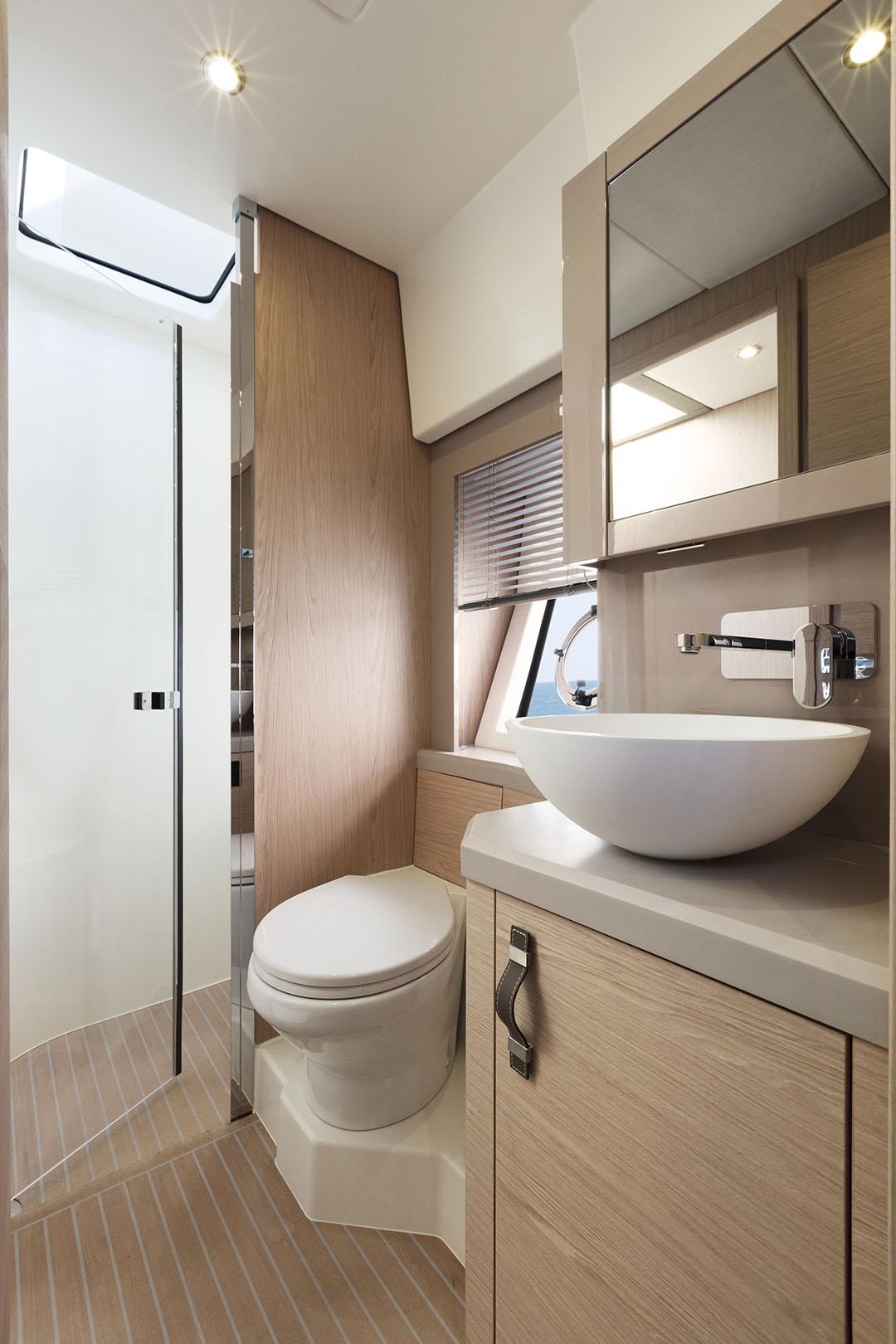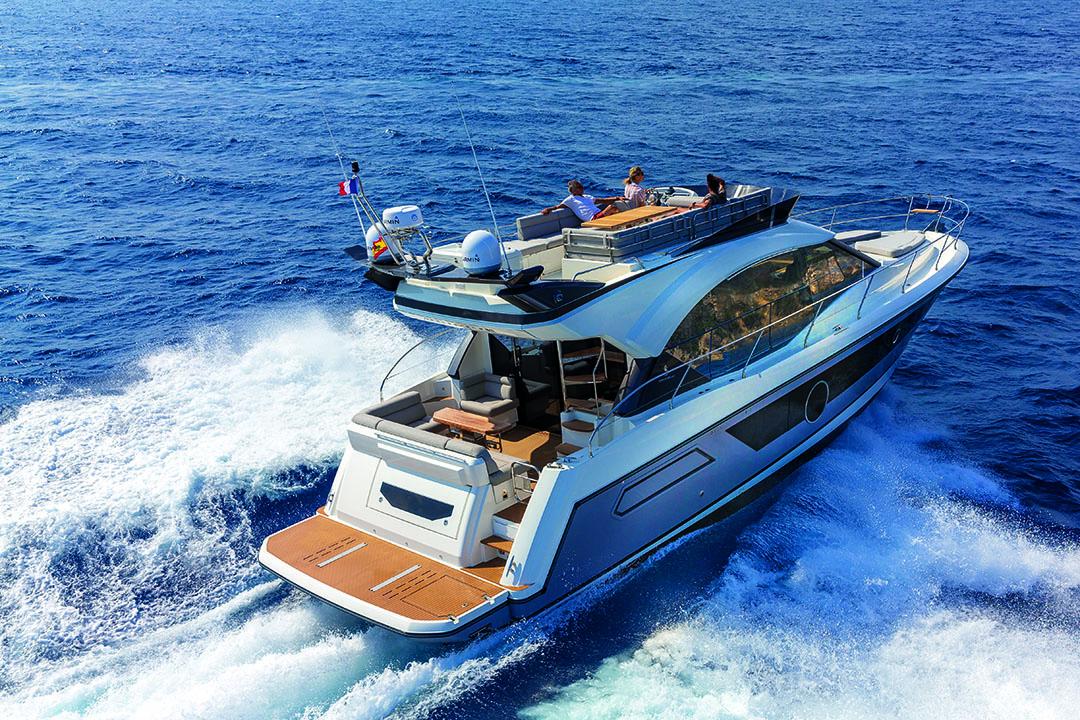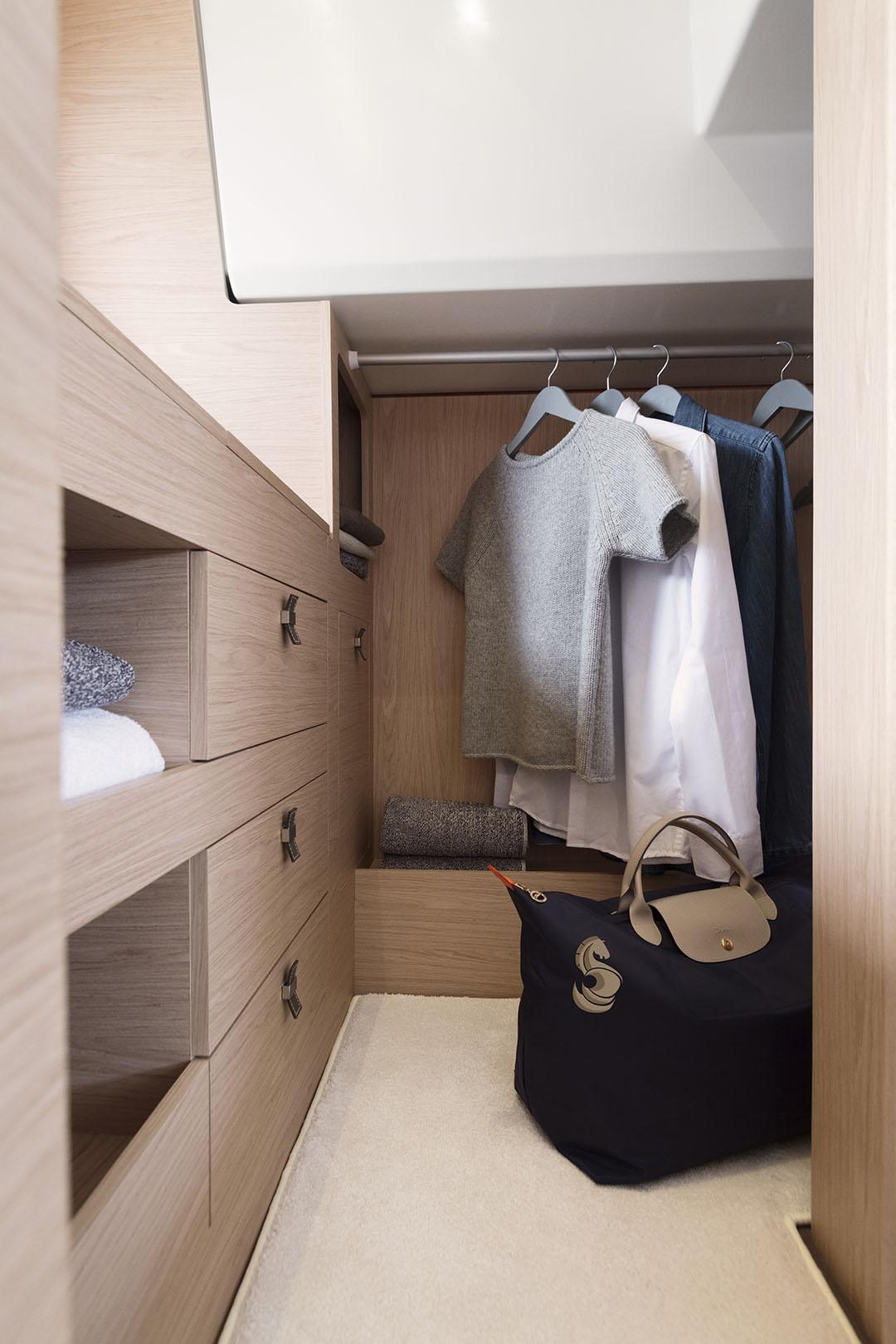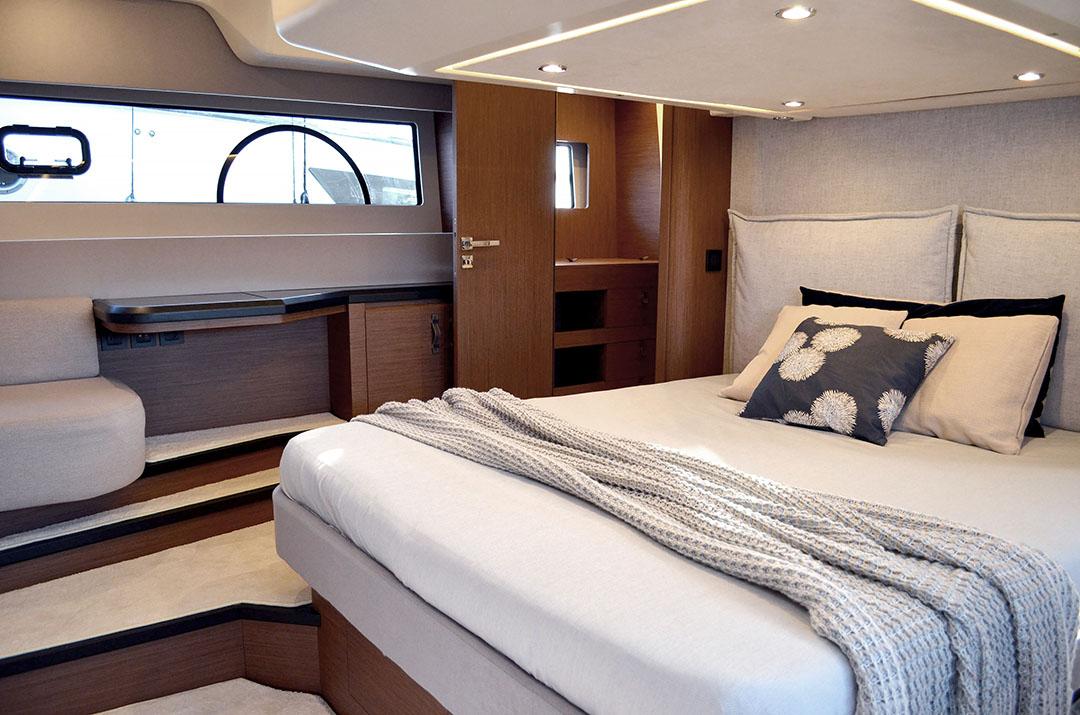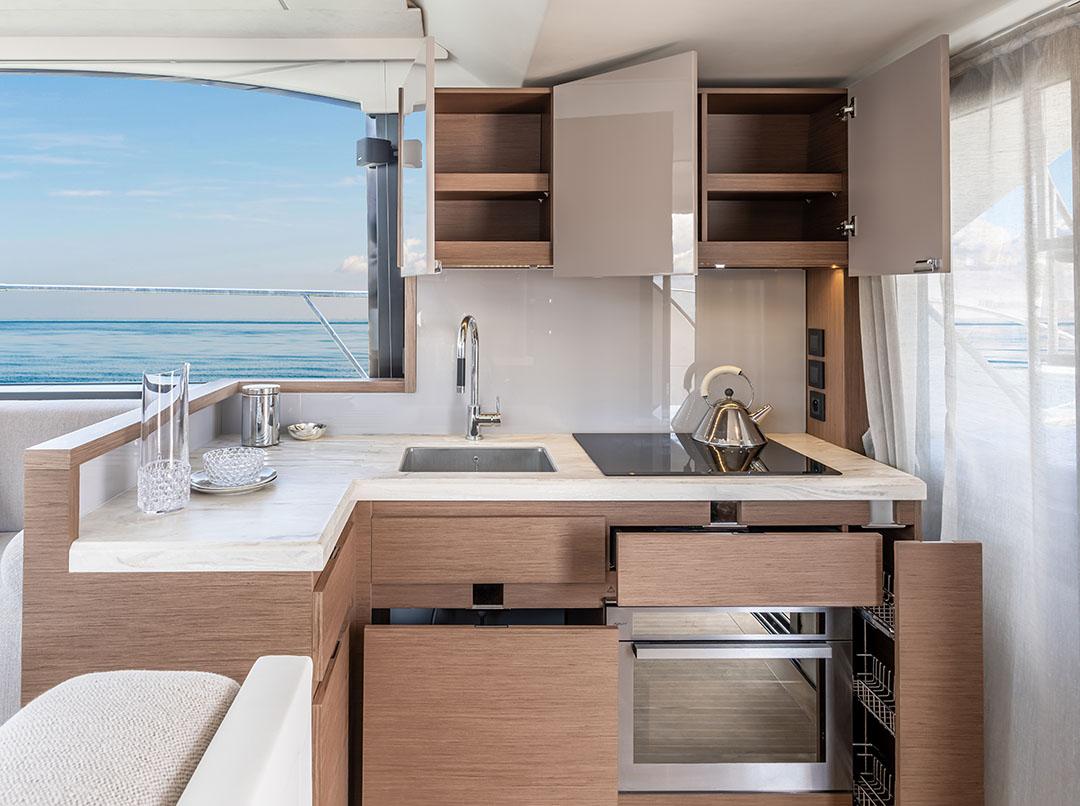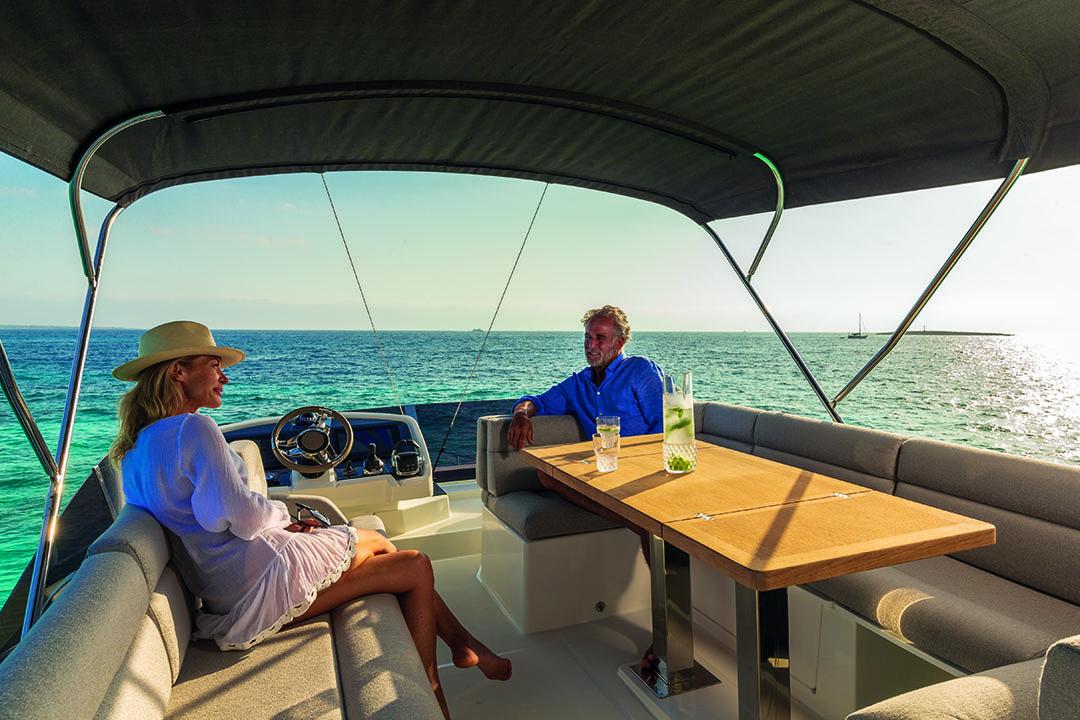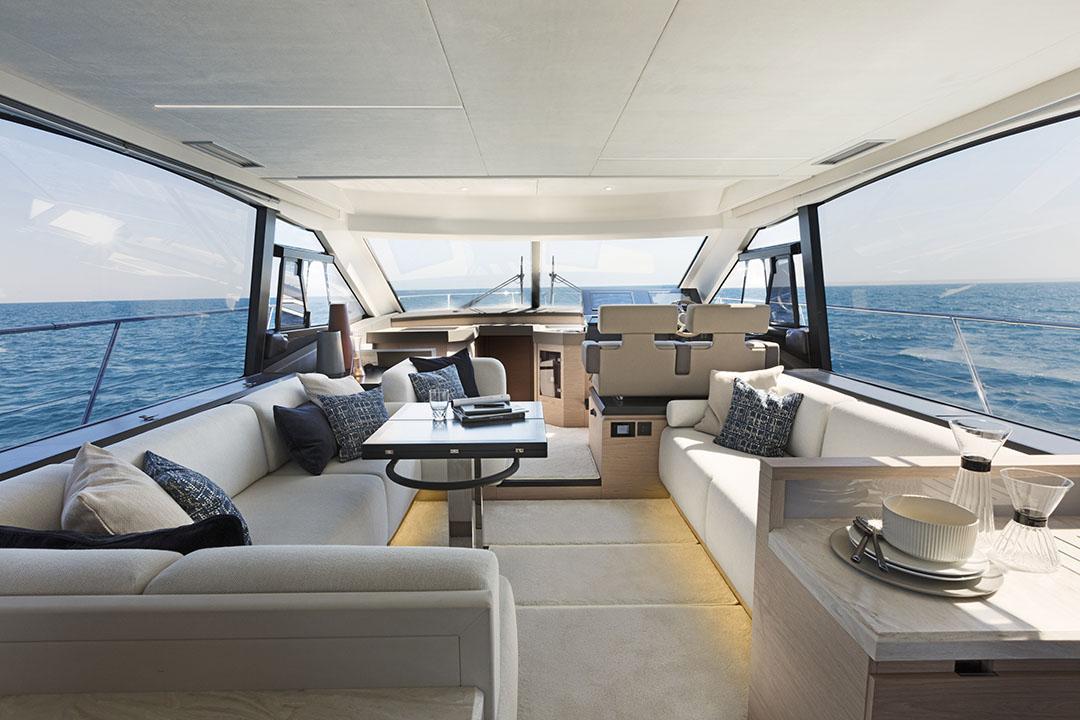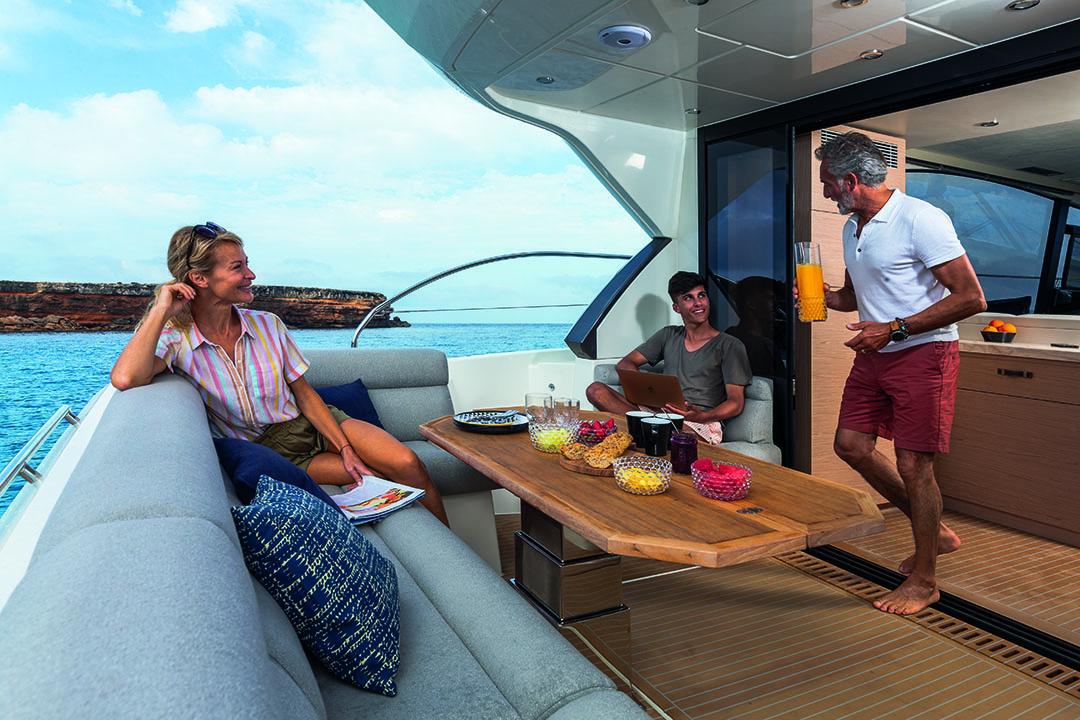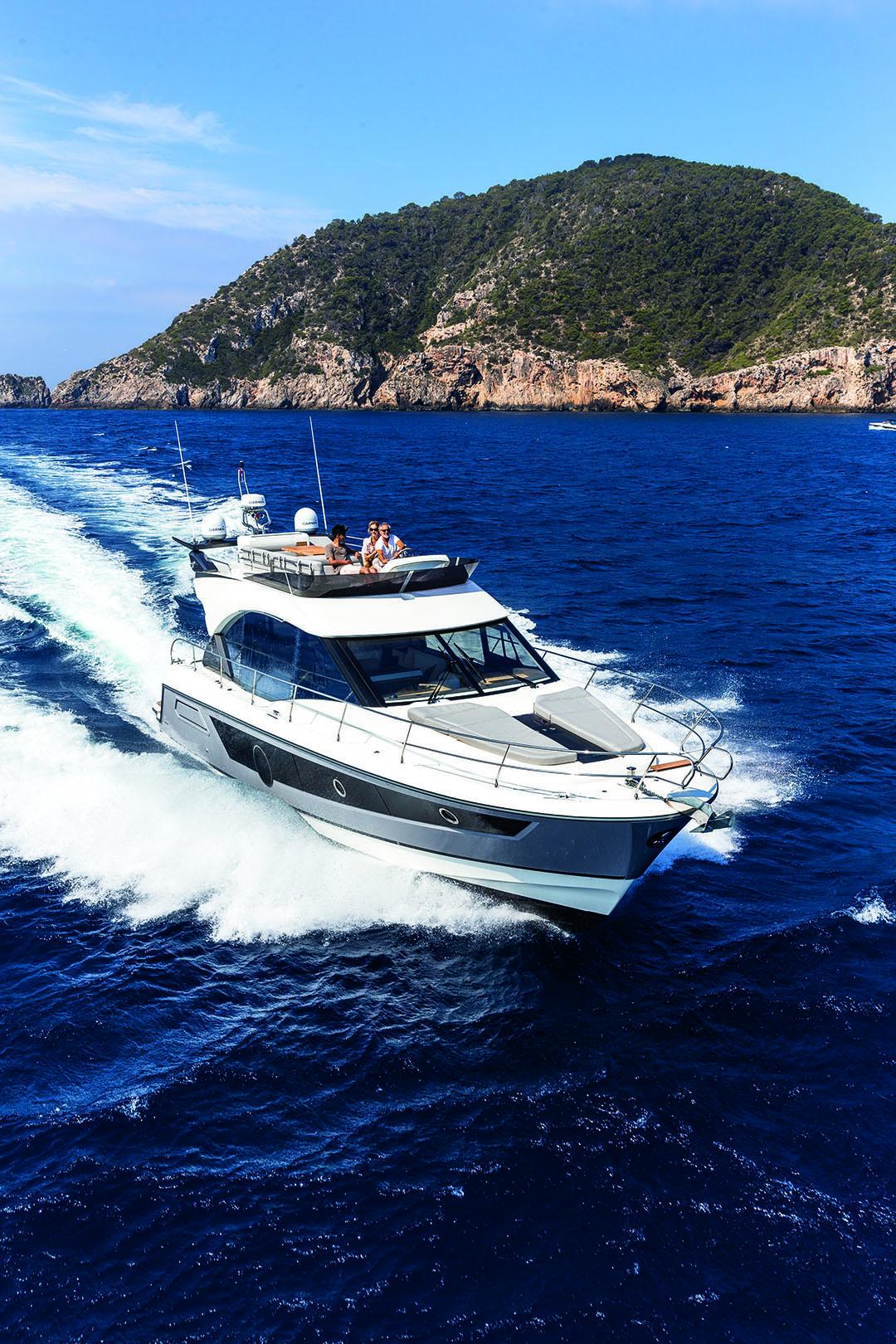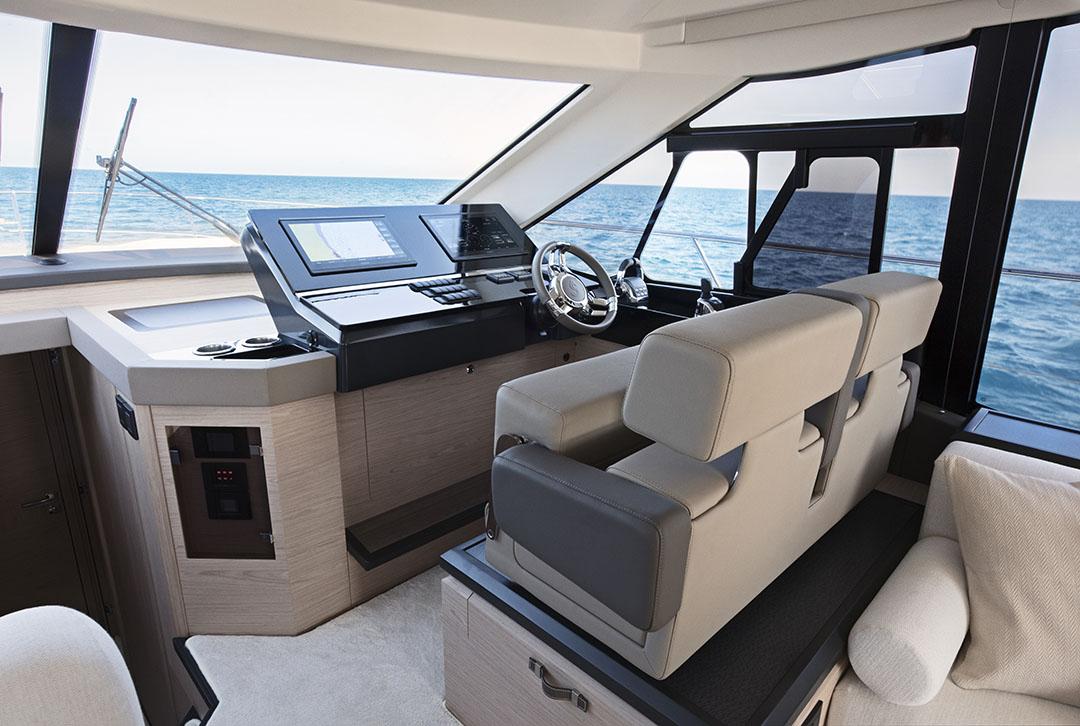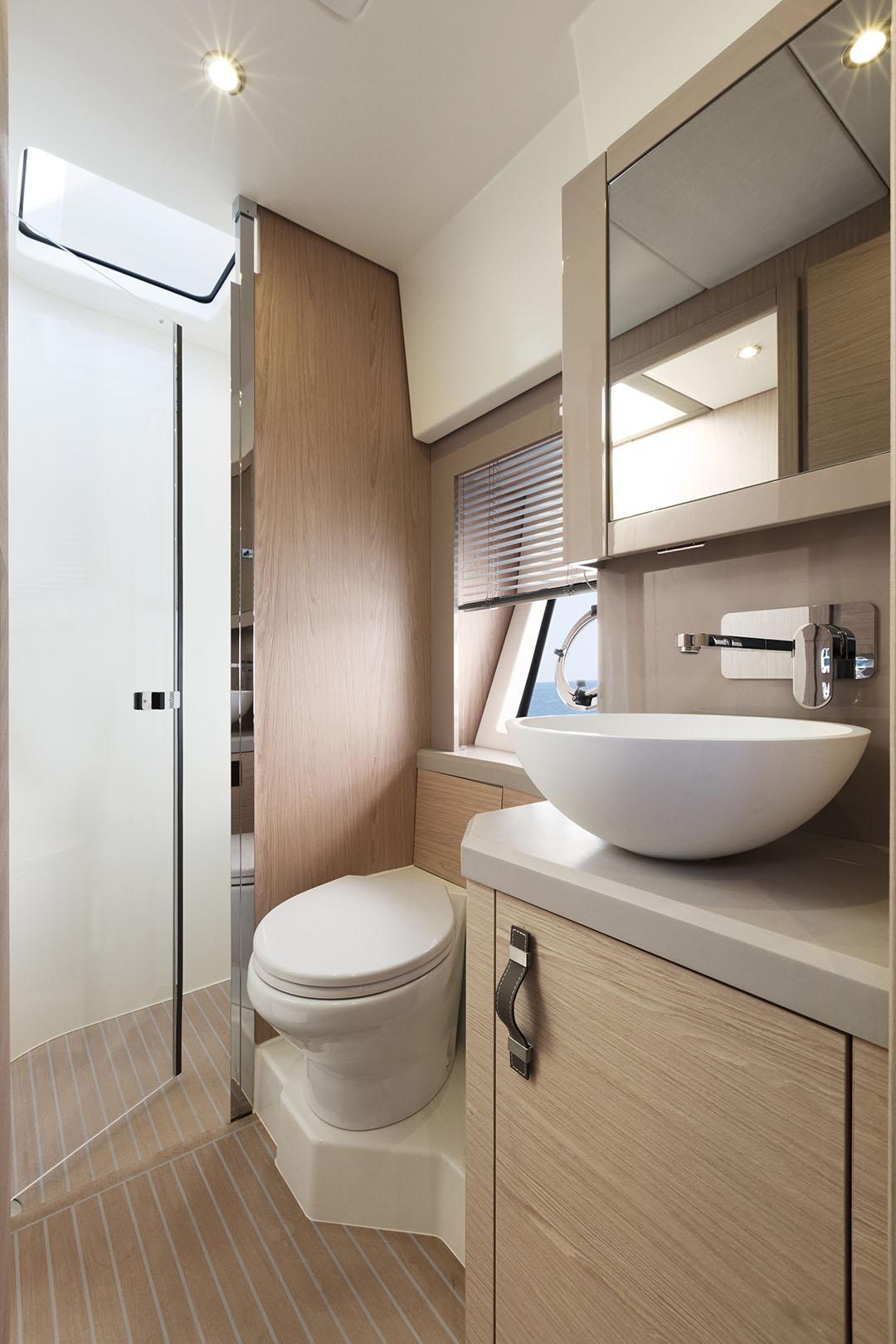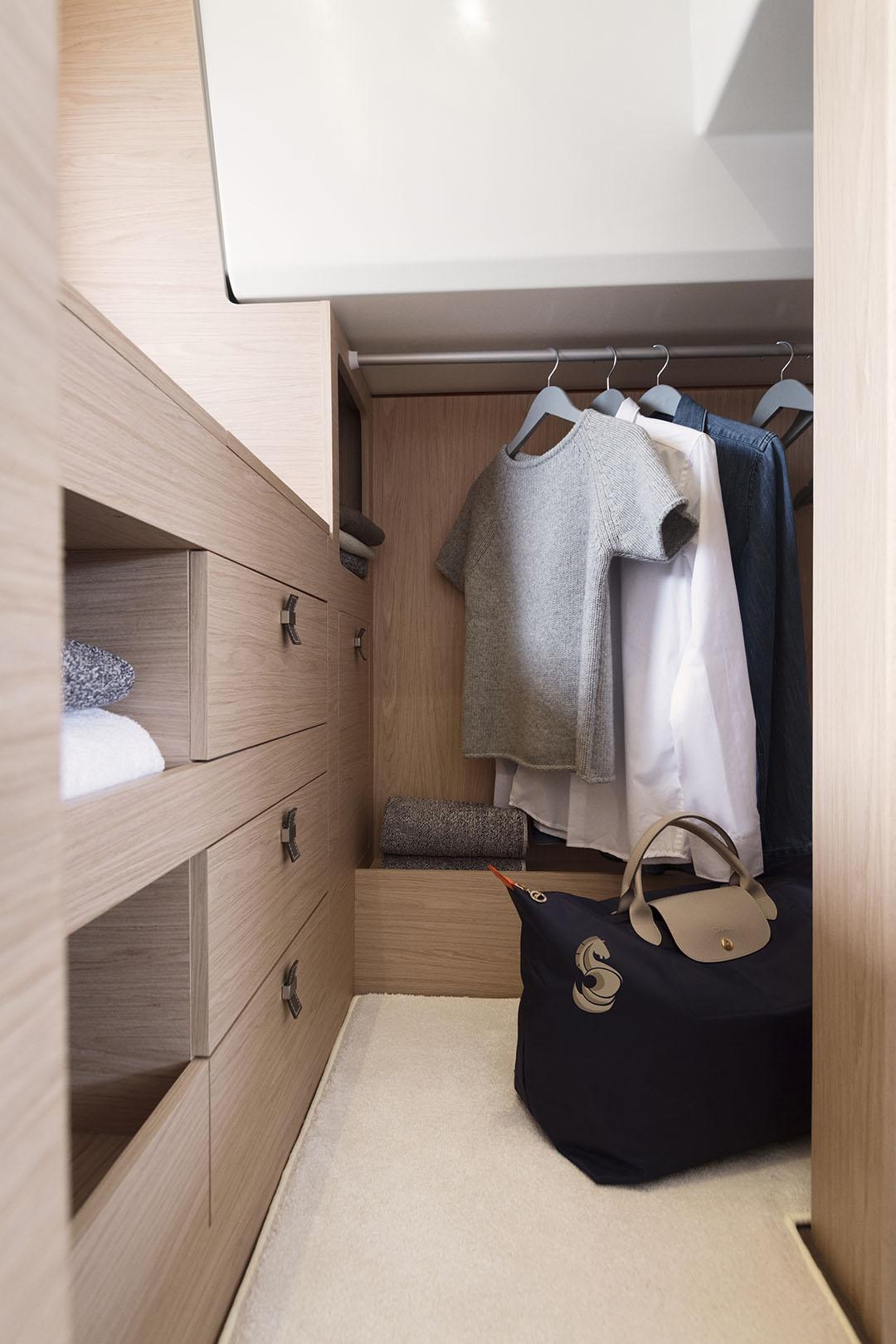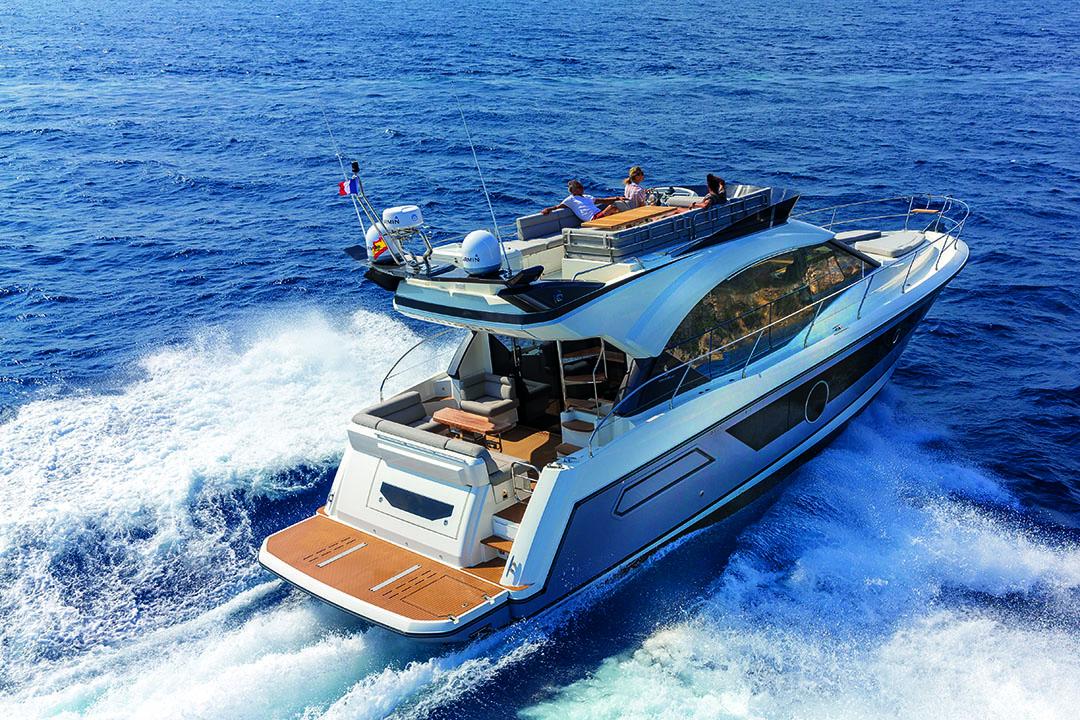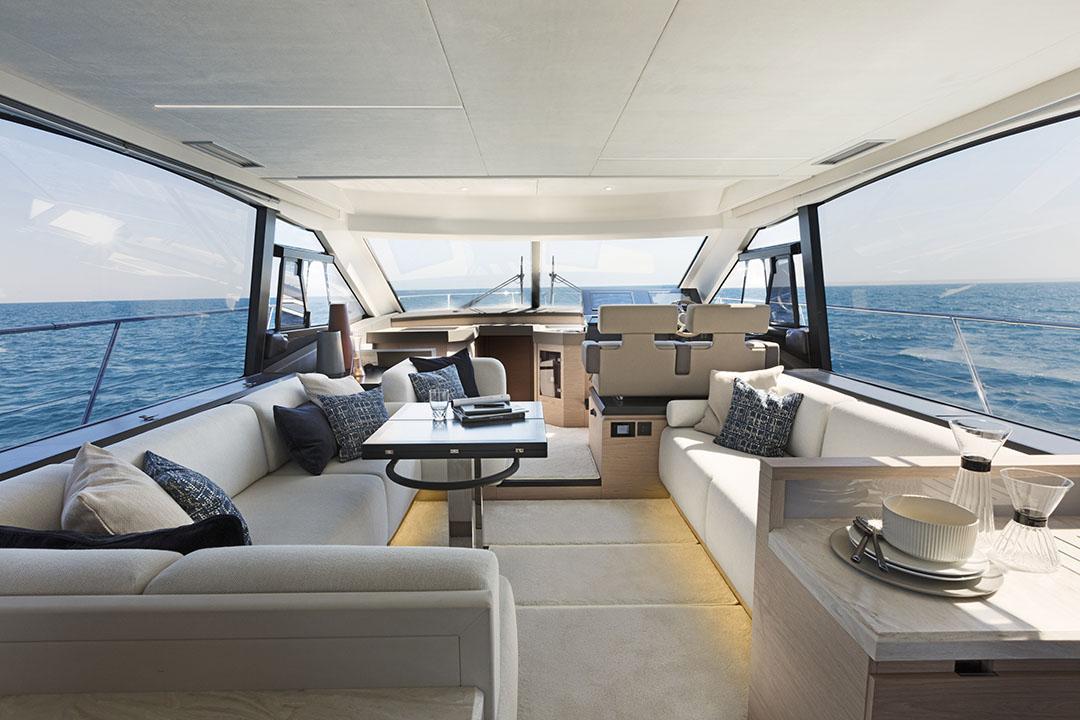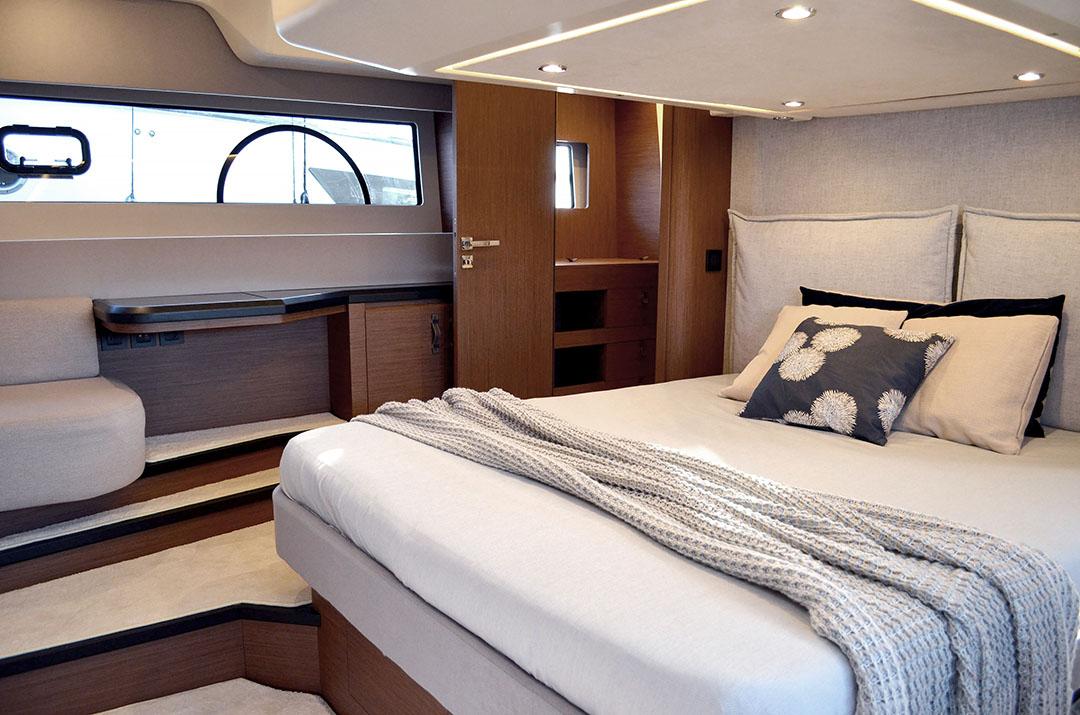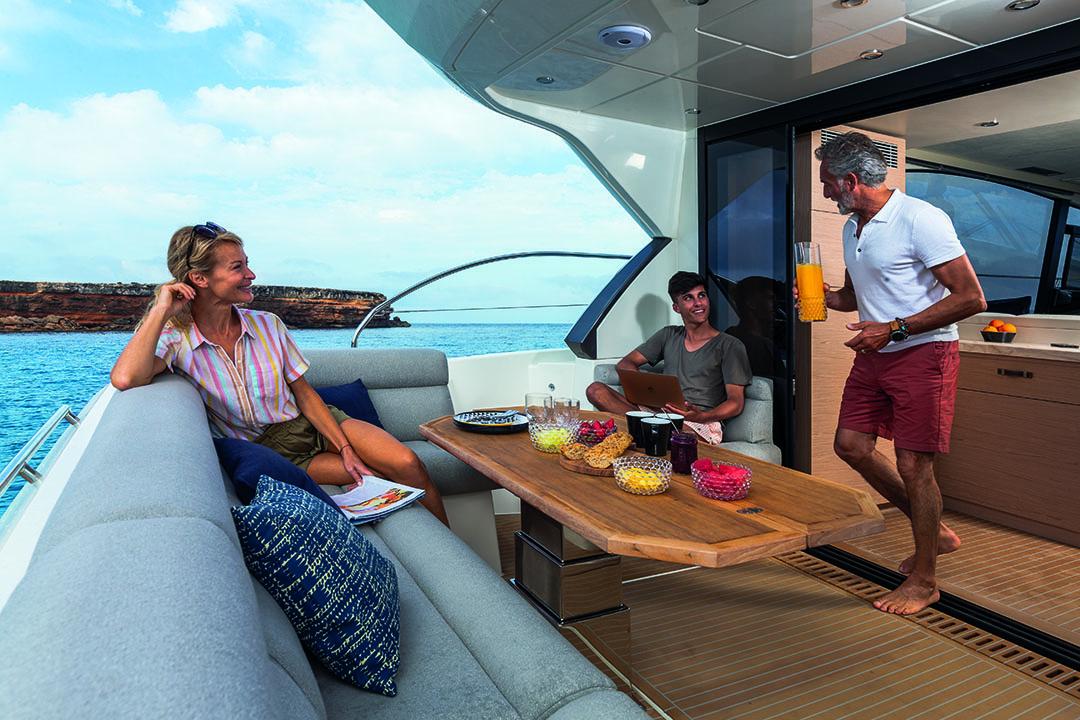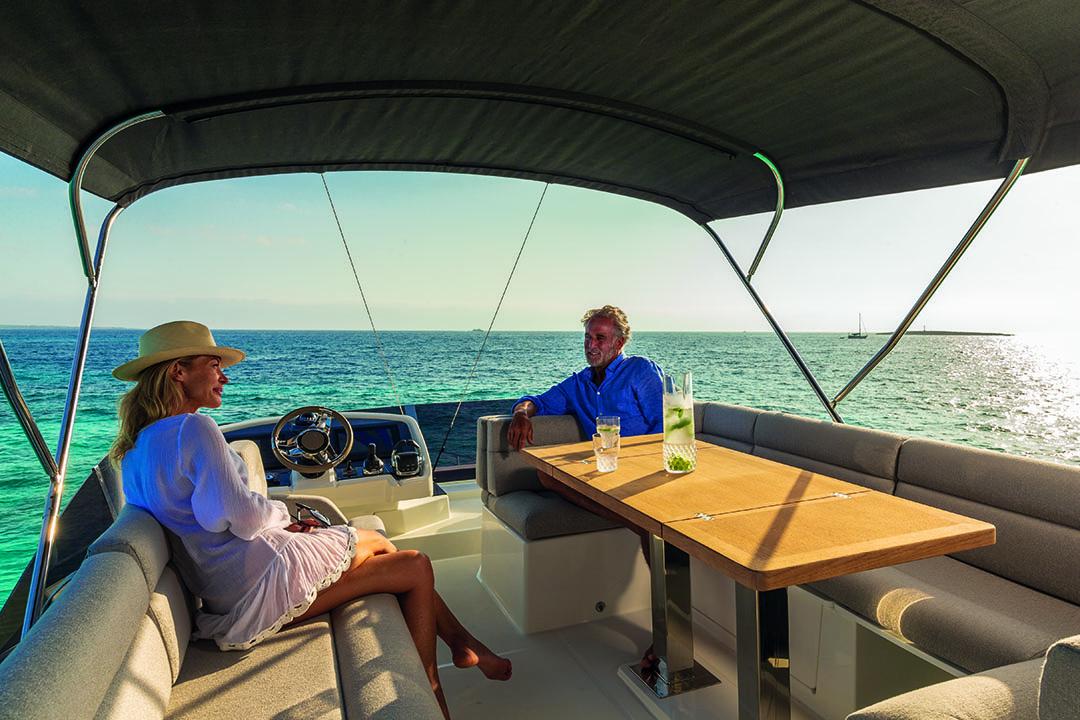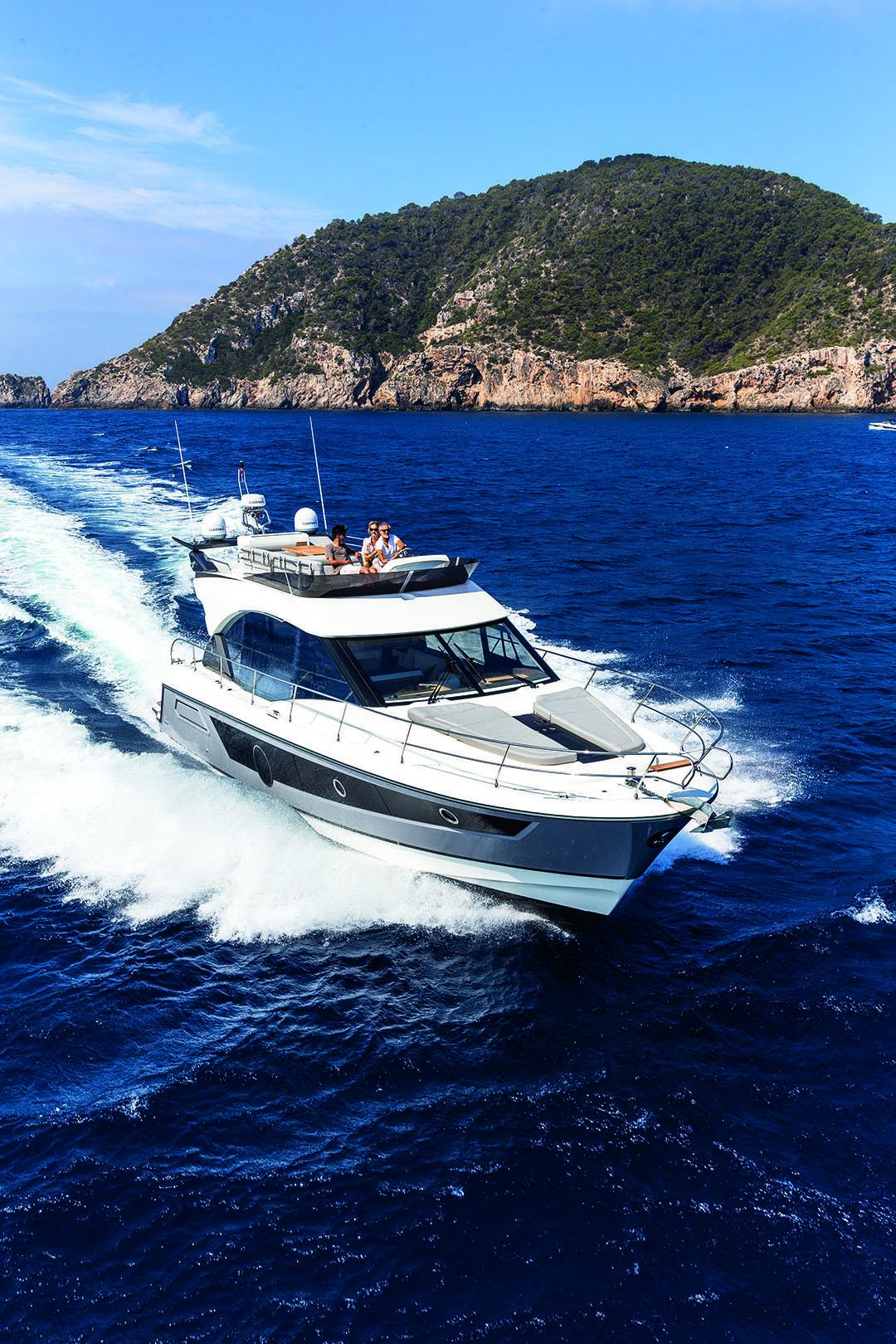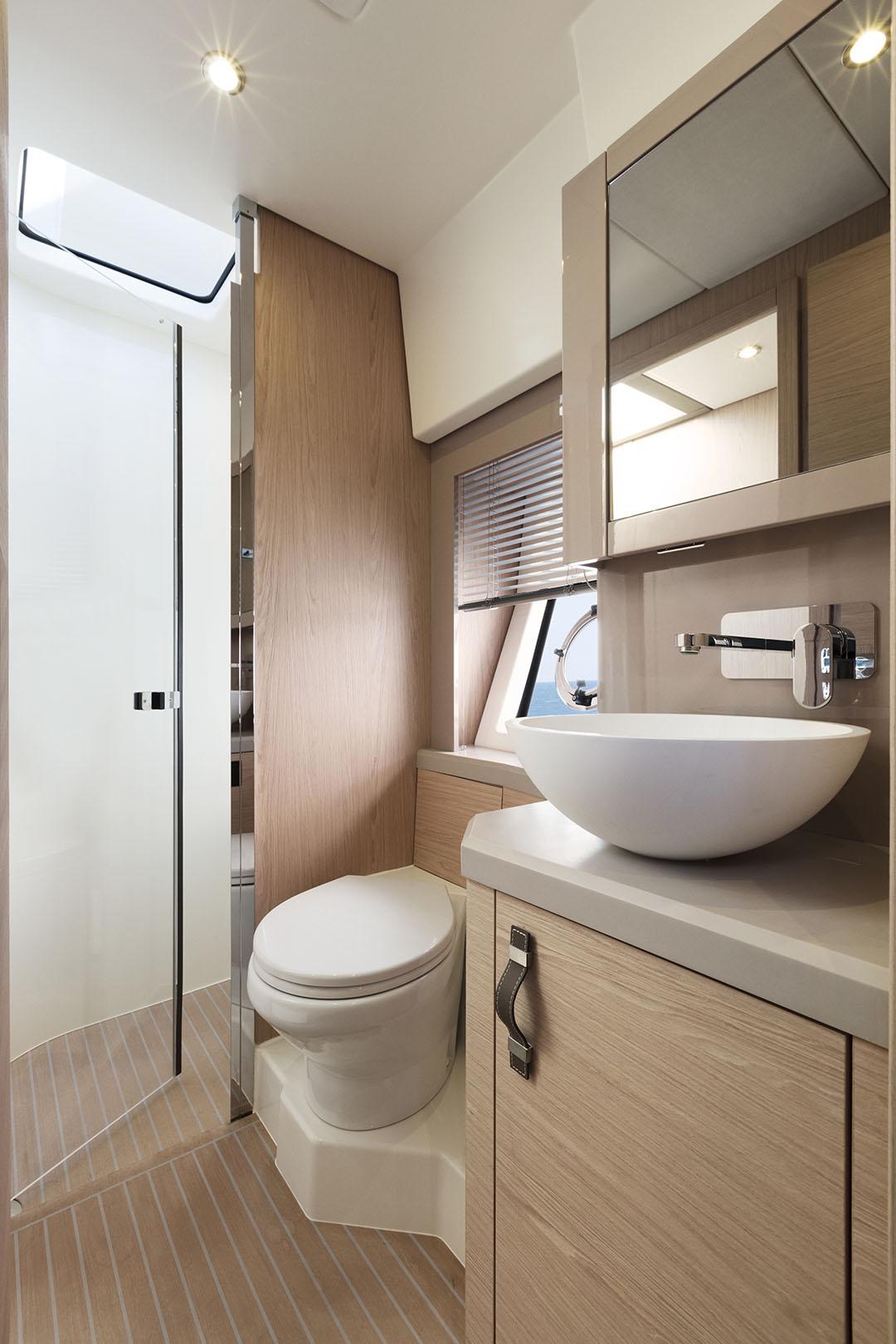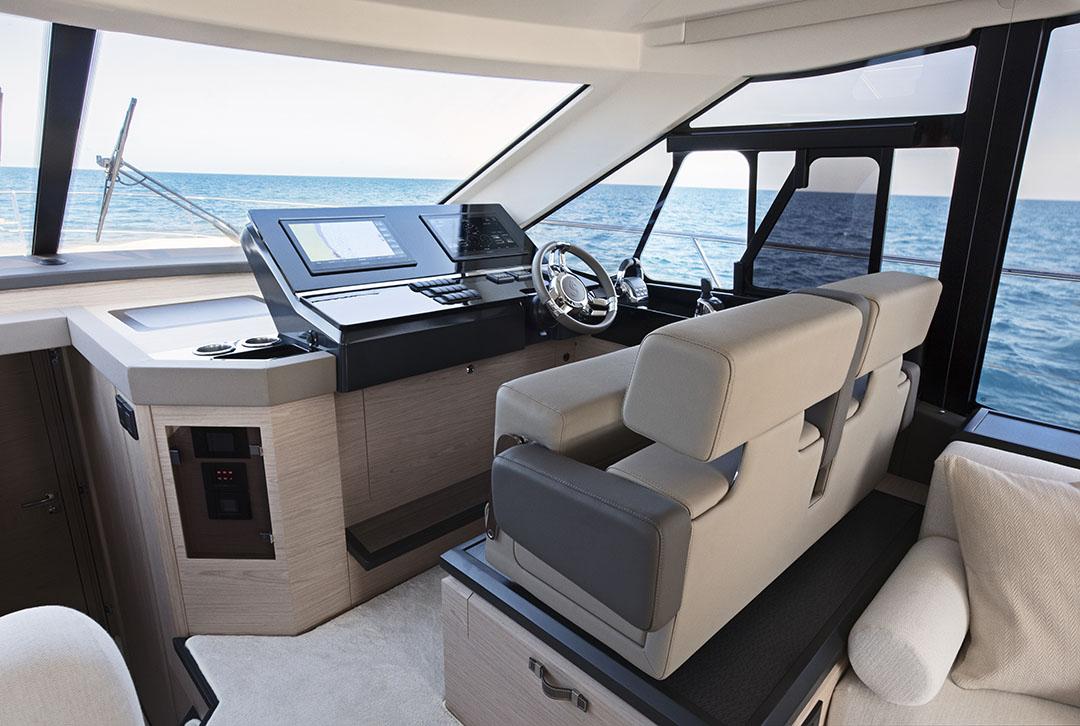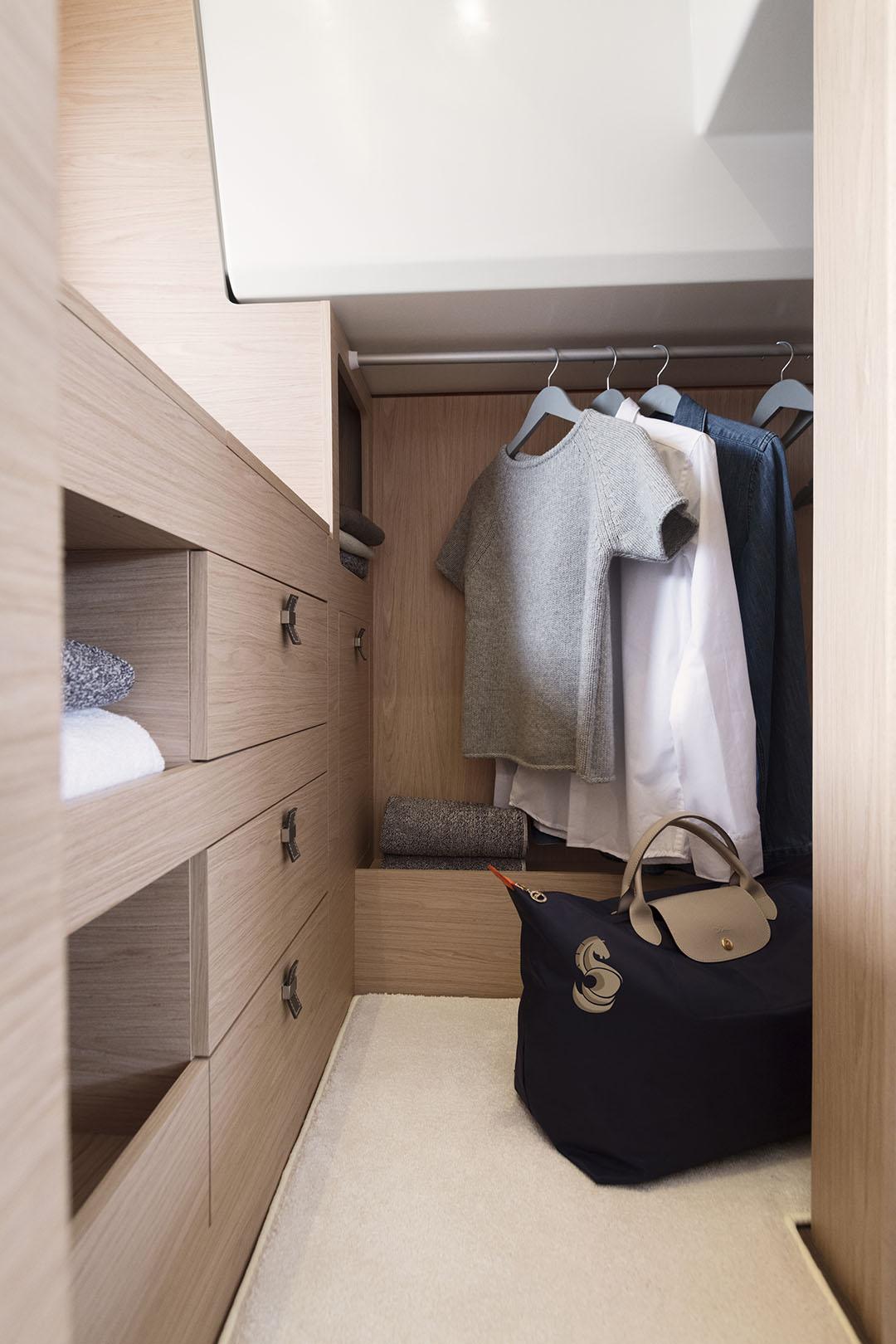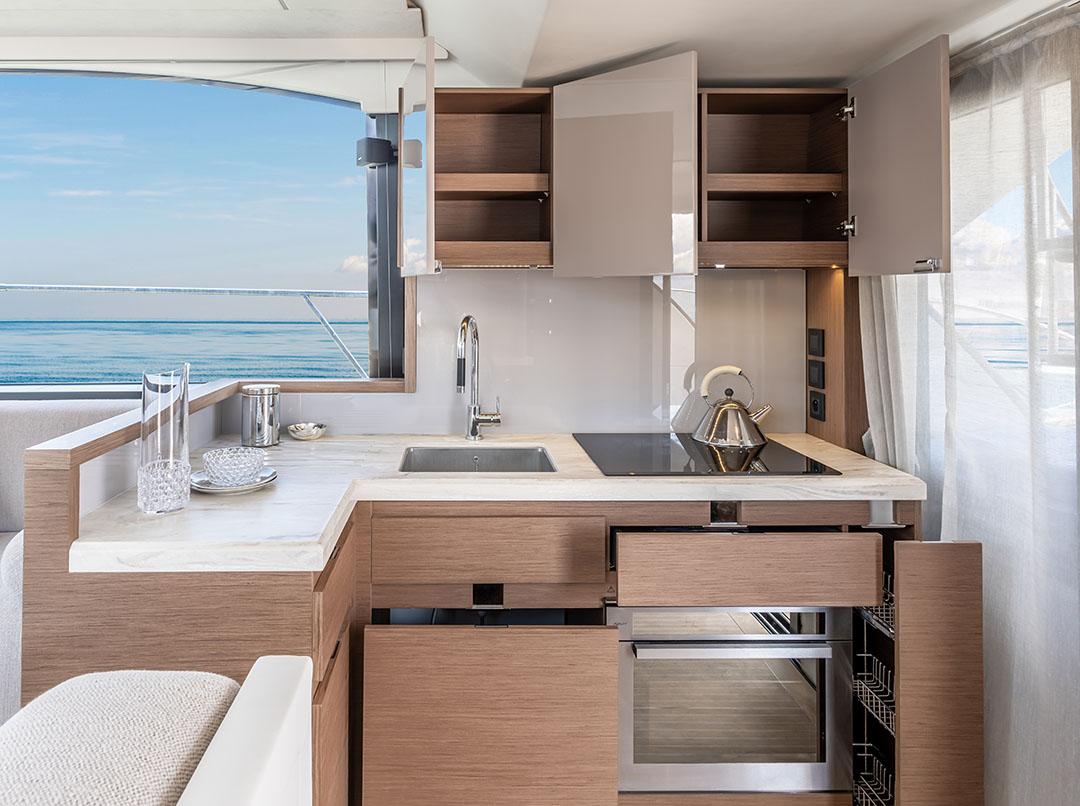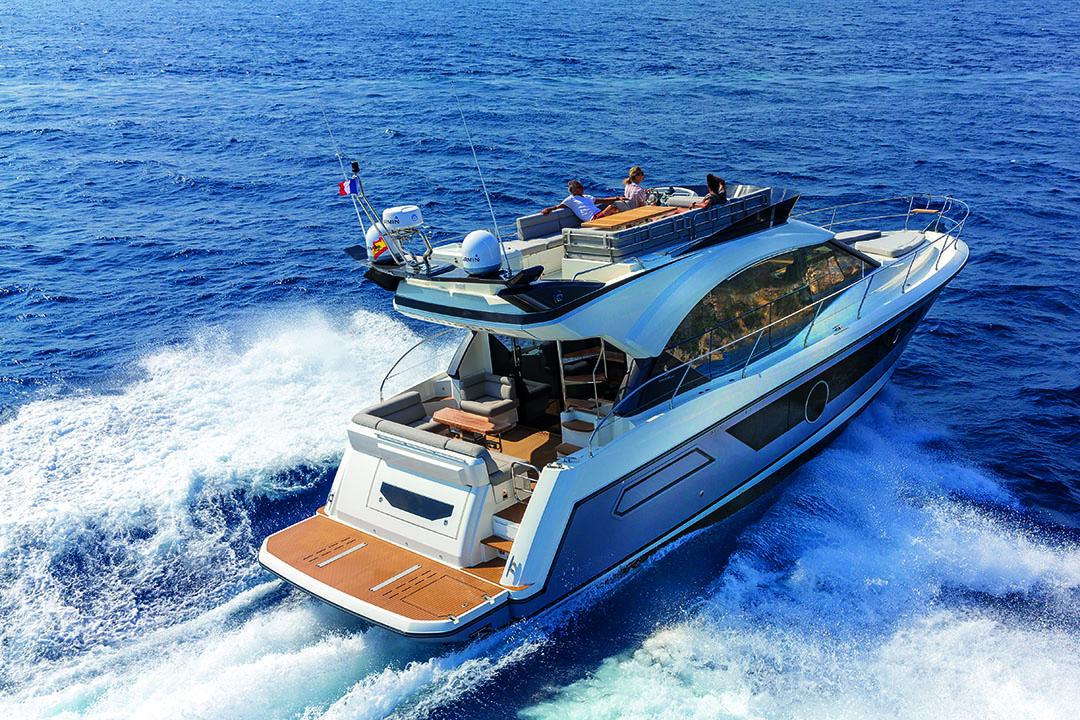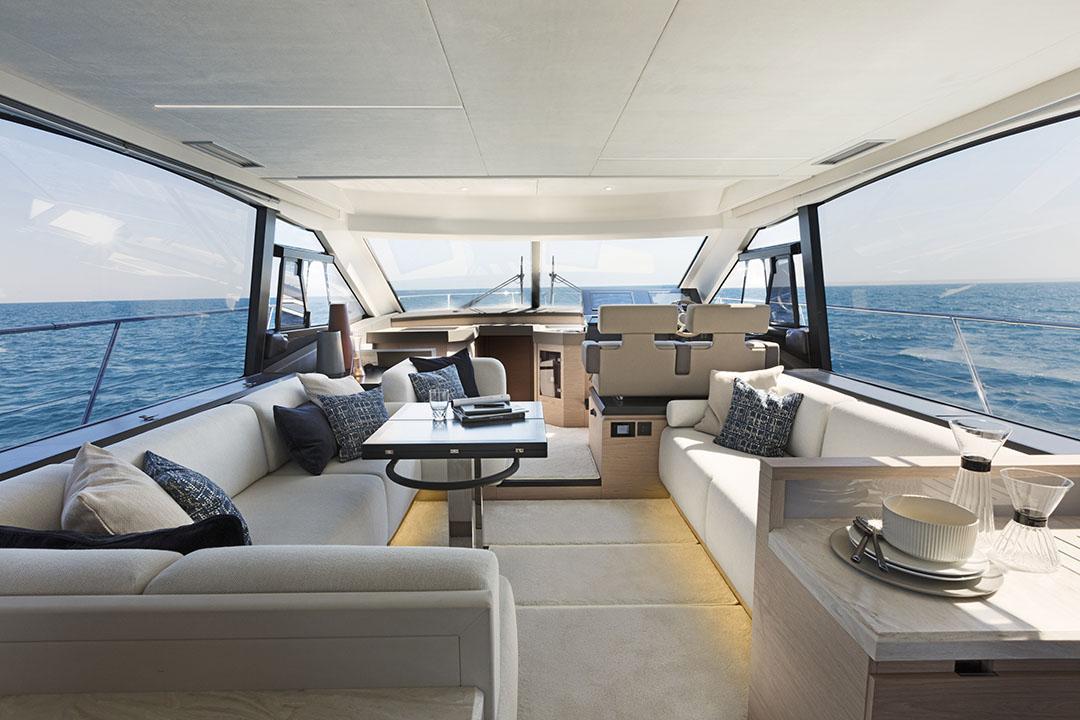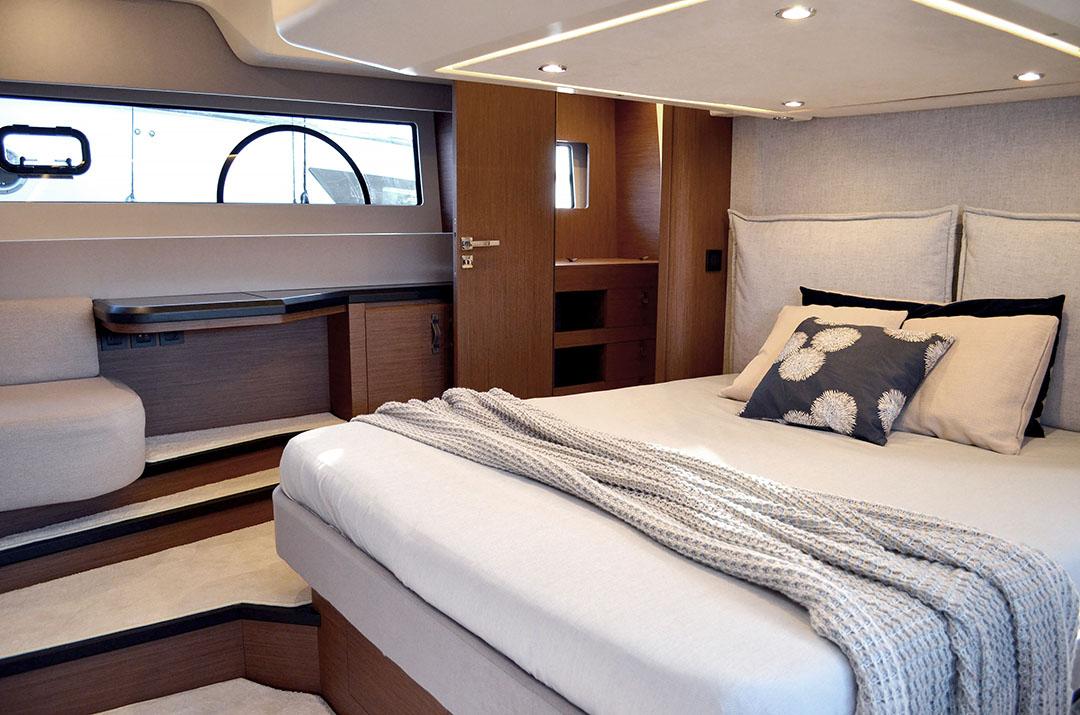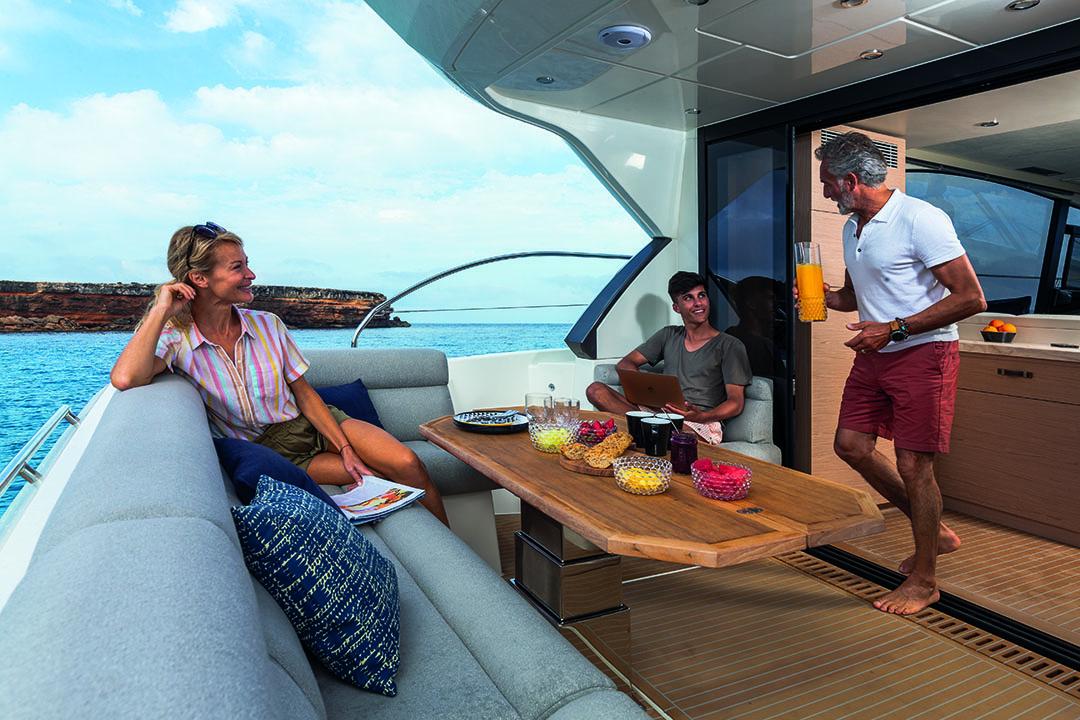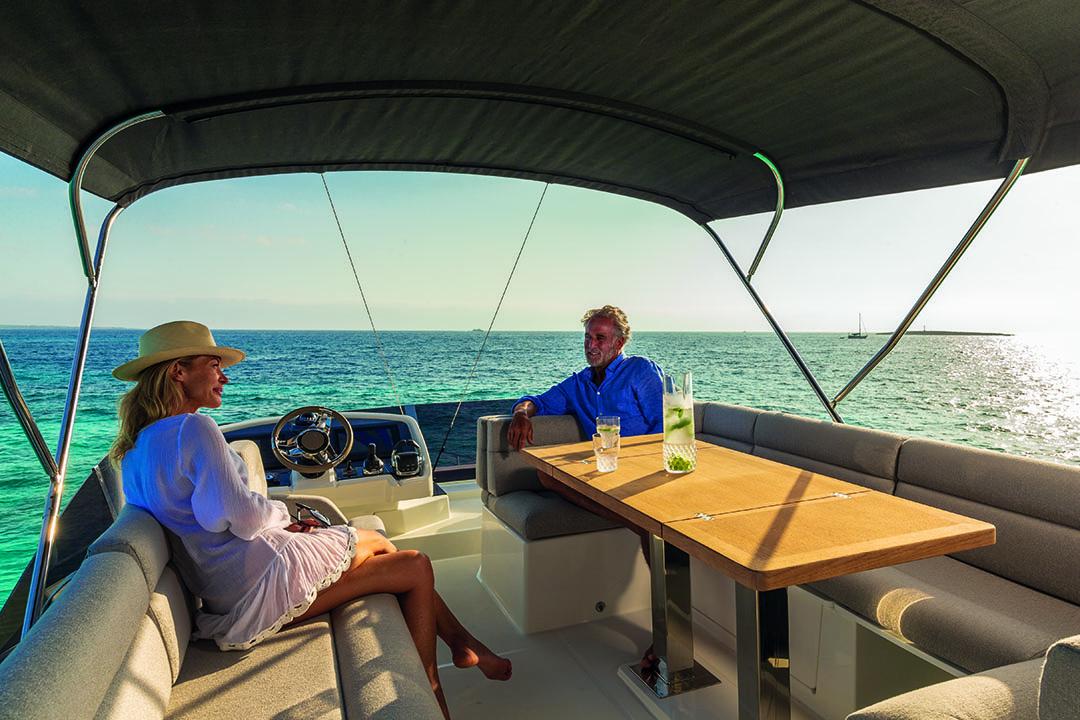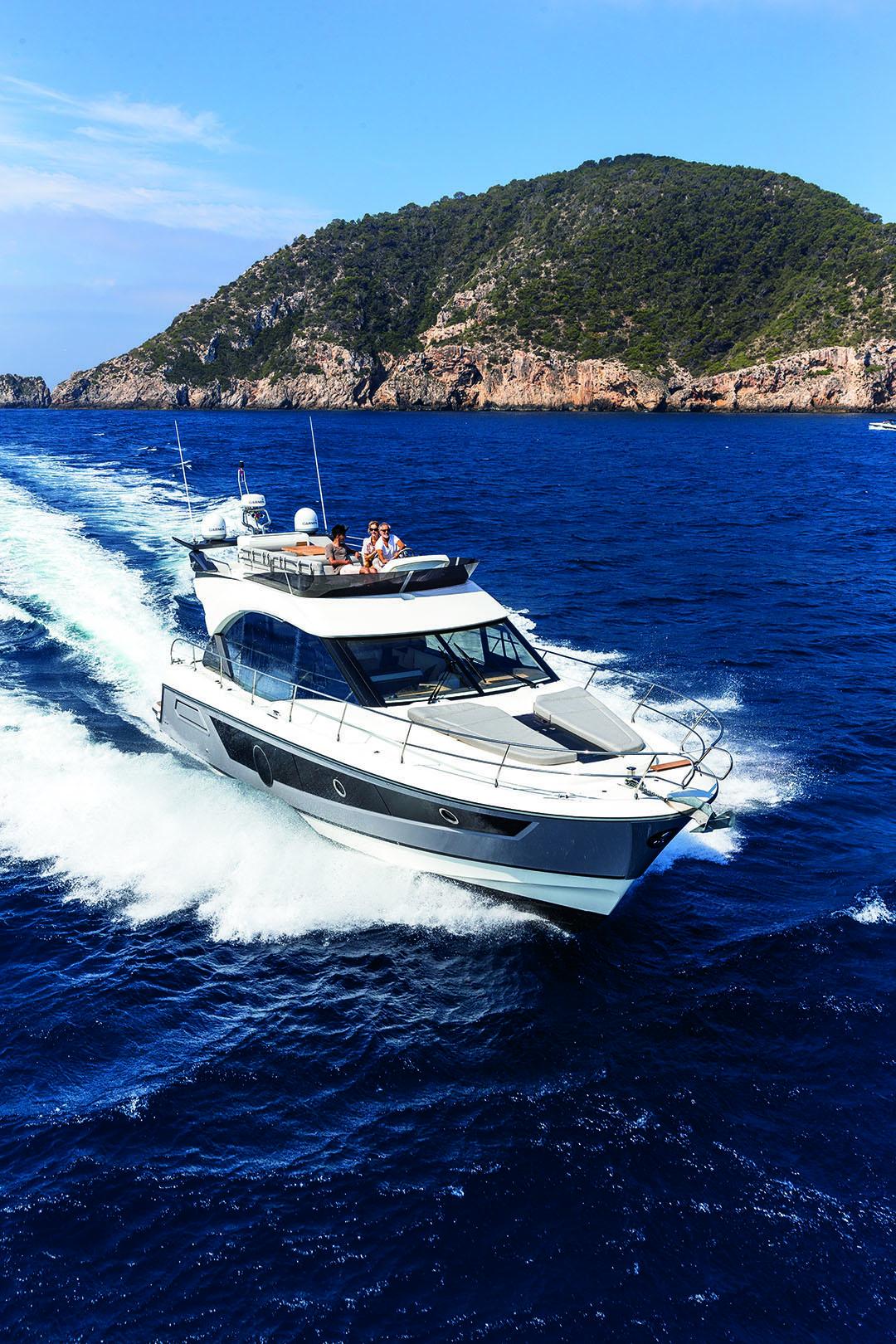Presentation
Yacht Class n°19 (dec 2019/jan-feb 2020)
GROUPE BENETEAU – Monte Carlo
The Monte Carlo 52 marks the introduction of the second generation of the Beneteau’s luxury-oriented range. Thanks to her contemporary design, a new comfortable hull and a layout designed for six, this small motor yacht is attractive for cruising.
Written by Christophe Varène – Photos : Jérôme Kelagopian
The yachting world not only expands, it also constantly evolves. Thus, Beneteau, one of the world leaders of the sector, has to regularly introduce new units in its motoryacht families. Created in 2013, the Monte Carlo range, with its name synonymous of luxury and the art of living, is the most “upscale” one. And this range is now entering a new era with this new 52-foot model, the first of its second-generation of refined prestige speedboats. With a hull revisited by naval architect Amedeo Migali and a style redefined by Nuvolari Lenard, this motor yacht replaces the Monte Carlo 5. The silhouette, without betraying the brand’s DNA with its vast round hull portholes, is dynamic and sleek, with a flared bow projected forward, a discreet flybridge – especially without the optional t-top – and an aft platform outlining the transom.
Well-equipped areas for relaxation
This hydraulic swim platform can be submerged to place the tender on a cradle and also conceals a retractable swim ladder. The massive transom can accommodate an optional captain’s cabin with access from the platform or from the side at the gate level. The cockpit offers a L-shaped settee with an electric table convertible into a sunpad, even if this space is protected by the flybridge and its awning extension. The narrow but secure gangways with pulpits and handrails lead to the foredeck and its two sun loungers with reclining backs. In-between, opening deck hatches offer natural light wells to the VIP cabin. At the stem, the external electric windlass is located behind the anchor locker and a trunk for some fenders. From the cockpit, an ergonomic spiral staircase leads to the flybridge, protected by a simple bimini or an optional t-top. Aft, a galley unit, with sink, grill, refrigerator and storage, is the perfect complement to the saloon with its table and comfortable settees. It also features a chaise longue on portside for relaxation and a co-pilot seat next to the helm station, where the captain is comfortably settled. This place is well-equipped, with all the controls at hand, but has a slightly sad design.
The manoeuvrability of Volvo IPS transmissions
Before visiting the interiors, let’s embark on a sea trip, rocked by the swell that often animates the south of Barcelona, to assess the behaviour of this coastal cruising yacht. With her two Volvo IPS600 diesels (2 x 435 hp), manoeuvring is peaceful and precise thanks to the now essential joystick. Or rather joysticks, since both the wheelhouse and flybridge have one. It is also possible to fit a third one in the starboard aft corner of the cockpit, to offer a clear and complete view of the port. From the wheelhouse, steering is as expected on a unit emphasizing comfort and relaxation rather than sportiness. The acceleration is peaceful, steady and smooth. In short, perfect for a prudent and responsible navigation, especially since the top speed of 23.5 knots remained below the 27 knots anticipated by the yard, probably with its maximum engine. At the cruising speed of 18 knots (2 900 rpm), she has an anticipated range of 180 miles (with a 20% fuel safety margin on the 1 300 litres on board).
In short: plenty of light and space
The time has come to look closely at the interiors styled by Andreani Design, Beneteau’s long-time partner. The saloon, accessible through the cockpit large sliding glass doors, offers an obvious sensation of light and space thanks to 20 m2 of glass side windows and a brushed light oak decoration (Alpi Matt finish walnut as standard). We enter directly in the practical and discreet galley, connecting the exteriors and interiors, which offers on both sides a complete equipment and leaves the central passage free. Two steps lead to a “cosy” space with a removable carpet and welcoming upholstery: a starboard sofa, concealing the television screen, opposite to the foldable table with its U-shaped settee for six. The wheelhouse occupies the starboard forward corner and features an elegant upholstery with a party adjustable seat bottom with stitched rhombuses. The dashboard is simple, elegant and well-equipped with two control screens. For an improved readability, its inclination could have been adjustable to the size or position of the captain. From there, five steps lead down to a first level where is located the forward VIP cabin. With a good headroom, it enjoys a generous luminosity thanks to the light wells we previously noticed, and the hull windows. There, the central double bed, concealing storage spaces, can be turned into two singles. The small landing also leads to a second cabin, with two single beds or a double bed, and the shared head compartment, with washbasin, WC and shower stall. Heading aft, three steps lead to the master cabin, the highlight of our belowdecks tour. With more than 16 m2 of surface area, it occupies the entire width of the boat and thus enjoys the view through long glass hull panels, with small opening portholes that must be closed during navigation. The central bed is overhung by a coffer providing indirect and soft electric lighting. On portside, a small lounge precedes a large dressing room, while the starboard corner houses a bathroom with sink, toilet and shower stall. As everywhere on the Monte Carlo 52, the finishes are of high quality and contribute to create a relaxing and serene atmosphere, conducive to cruising.
Technical sheet
